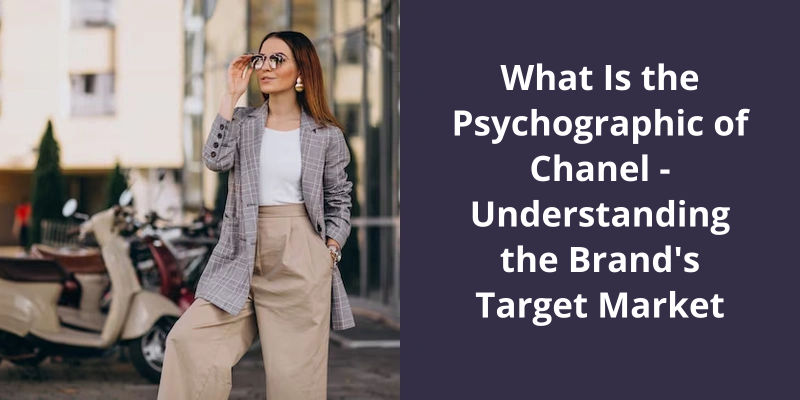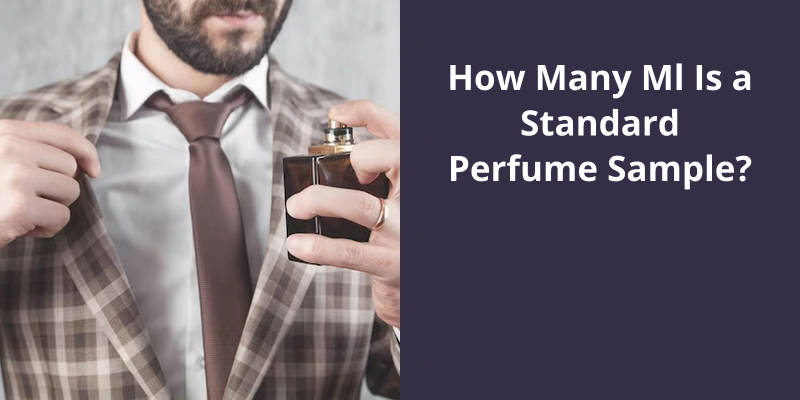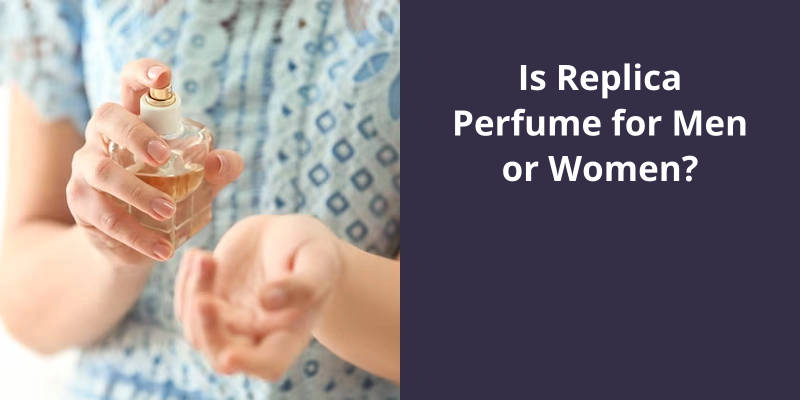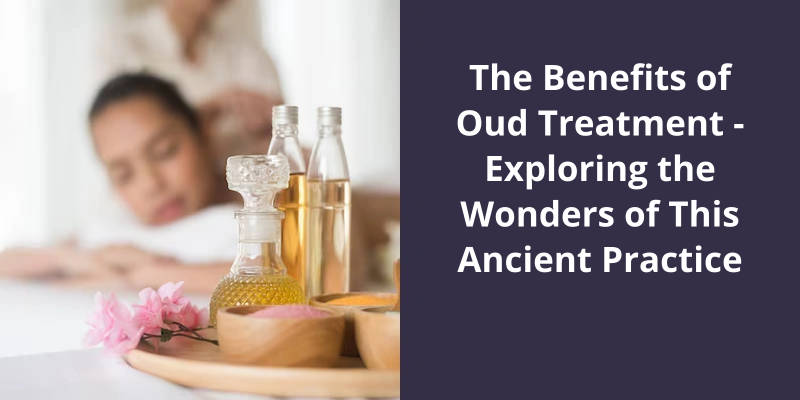The psychographic of Chanel typically includes individuals who value high-quality and luxury items, have appreciation for sophistication, and have a strong desire to express their personal style. They are often high-income earners who consider the importance of appearance and prestige. Chanel’s customers usually lean towards exclusivity and are not afraid of spending more for luxury and quality. The brand appeals to those with enduring style, not solely focused on current fashion trends but a timeless and classic aesthetic. Additionally, Chanel consumers are likely to be detail-oriented, given the meticulous craftsmanship that goes into each product.

What Is Chanel’s Business Model?
One of the key aspects of Chanels business model is it’s emphasis on quality. Every product is made with the finest materials and undergoes rigorous quality control checks to ensure the highest standards are met. This ensures that customers receive products that aren’t only stylish but also durable, making them a long-term investment rather than a short-term fashion statement.
Chanel also places a great deal of emphasis on exclusivity. By limiting the number of items available, and by creating unique, one-of-a-kind pieces, Chanel creates a sense of scarcity that drives demand for it’s products. This exclusivity also allows Chanel to command high prices, ensuring that only a select few can afford to wear their products.
Another important aspect of Chanels business model is it’s distribution strategy. Chanel products are primarily sold through their own stores, which are carefully designed and curated to reflect the brands image and aesthetic. This allows Chanel to control all aspects of the customer experience, from the moment they enter the store to the moment they purchase a product.
Finally, Chanels business model is anchored in it’s commitment to sustainability. It’s implemented a range of initiatives to reduce the environmental impact of it’s products, including using sustainable materials and minimizing waste in it’s production processes. This focus on sustainability aligns with the values of it’s customers, helping to build a long-term relationship based on shared values and mutual trust.
As we dive deeper into Chanel’s marketing strategies, it’s important to understand the brand’s target demographic. Chanel caters to a specific group of people who’ve a certain mindset and lifestyle. They’re affluent individuals who value luxury and status, and they see Chanel as a fashion commodity that represents their self-concept. With this in mind, let’s take a closer look at how Chanel caters to their target demographic.
What Is Chanel’s Target Demographic?
The target demographic for Chanel is a middle-aged audience with a range of 18-50, who’ve an annual income level of $100,000 or higher. The reason why age and income level are important is that there’s a direct correlation between the two. Older individuals with a high income level are more likely to have disposable income that they can spend on luxury goods such as Chanel products.
Chanels target demographic is further defined by it’s psychographic segmentation. These individuals view themselves as affluent and seek to portray themselves as such through the brands they associate with. For these individuals, Chanel represents a fashion commodity that’s synonymous with status and financial success.
One of the main reasons why Chanel has been so successful in reaching and retaining it’s target demographic is because of the brands reputation for quality and luxury. Chanel has always been associated with superior quality, and the brand has worked carefully to curate an image that exudes luxury and exclusivity. This has allowed the brand to become an aspirational symbol for individuals who identify as affluent.
Chanel has also been successful in targeting millennials, who’re looking for values such as authenticity, sustainability and are more conscious of where they put their dollars. Chanel has been building sustainability into all aspects of it’s business, from the sourcing of raw materials to the production process, and it’s been voting resources to develop new technologies that can help to reduce the brands environmental impact.
Chanel’s Marketing Strategies and Tactics to Reach It’s Target Demographic.
- Collaborating with popular influencers to endorse products on social media platforms.
- Hosting promotional events and fashion shows to showcase new collections.
- Tapping into a sense of exclusivity by limiting distribution and availability of certain products.
- Emphasizing the brand’s history and legacy in advertising and marketing campaigns.
- Creating visually stunning and memorable print and television ads to appeal to luxury consumers.
- Offering personalized and attentive service at boutiques and online to create a sense of luxury and exclusivity.
Source: CHANEL’s Segmentation Nianlong Lin’s Blog
Chanel’s timeless and elegant designs have attracted a wide range of clients throughout it’s history. From iconic figures like Jackie Kennedy and Marilyn Monroe to modern-day celebrities like Pharrell Williams, Keira Knightley, and Audrey Tautou, the brand has built a loyal following of fashion-forward individuals who appreciate luxury and sophistication. But who exactly are Chanel’s clients, and what draws them to the brand? Let’s take a closer look.
Who Are Chanel’s Clients?
Chanels clients are essentially individuals who value luxury, elegance, and timelessness in their fashion choices. They’re individuals who aren’t afraid to spend money on high-quality, well-crafted clothing that exudes class and sophistication. These clients are typically those who can afford to shop at high-end luxury brands, and are often leaders in fashion and style, influencing trends and setting the tone for what’s considered fashionable.
A key aspect of Chanels clients is their appreciation for the brands signature style – the iconic tweed jackets, little black dresses, and quilted handbags. These pieces have become synonymous with the Chanel brand and are a must-have for those who consider themselves aficionados of luxury fashion. Chanel clients understand that investing in these timeless pieces is a smart move as they’ll never go out of style.
These individuals appreciate the art of living, and seek out experiences and products that reflect their refined tastes. This can include anything from fine dining and wine to travel and spa retreats. Chanel caters to these clients by offering a complete lifestyle experience, with offerings such as Chanel skincare and makeup, Chanel fragrance, and even a Chanel fine jewelry line.
They appreciate Chanels signature style and understand the value of investing in timeless pieces.
Chanel has long been known as a brand that caters primarily to women. However, in recent years, there’s been a shift in the brand’s marketing strategy, leading many to wonder if Chanel is now targeting men as well. Despite this, Chanel’s target audience still remains the same, encompassing men and women alike within a wide age range.
Does Chanel Target Men?
Chanel has long been regarded as one of the most iconic fashion houses of all time. Founded by the legendary Gabrielle “Coco” Chanel in 1909, the brand has revolutionized the world of fashion with it’s innovative designs and groundbreaking marketing tactics. Despite it’s reputation as a womens fashion brand, Chanel has also made strides in targeting men with it’s wide range of products.
One of the most notable Chanel products for men is their fragrance line, which includes some of the most popular and sought-after colognes on the market today. Chanels mens fragrances vary from woody to fresh and powdery scents, which appeals to a broad range of male consumers. The brands most notable fragrances for men include Bleu de Chanel, which has become a full-fledged mens fragrance series, and Antaeus, which is a modern interpretation of an old classic.
Moreover, Chanel has expanded it’s offerings to include accessories such as sunglasses, watches, and jewelry pieces that are targeted towards men. The brand has also stepped into the world of skincare and grooming, launching a range of products specifically engineered for mens skin types.
By doing so, Chanel is able to target a broader audience, which includes both men and women of all ages and backgrounds. Chanels marketing tactics are a testament to the brands ability to adapt to the ever-changing landscape of fashion and appeal to a diverse audience.
With a range of products that cater specifically to mens fashion and grooming needs, the brand has been able to appeal to a broad audience.
How Has Chanel’s Marketing Strategy Evolved to Include Men’s Products Over Time?
- Chanel started out as a women’s fashion brand in the early 1900s
- It was not until the 21st century that Chanel expanded into men’s fashion with the introduction of their first men’s fragrance in 2004
- Since then, Chanel has continued to expand their men’s products line, including clothing and accessories
- Chanel’s marketing strategy has evolved to include more targeted campaigns aimed at men, with the use of male models and new advertising channels such as social media
- Chanel has also collaborated with famous male brand ambassadors like Pharrell Williams and Brad Pitt to attract a male audience
- Overall, Chanel’s marketing strategy has shifted from purely catering to women to being more inclusive of men’s products and advertising, while maintaining it’s luxury brand image
As CHANEL continues to dominate the luxury fashion market, it’s important to analyze the company’s biggest competitors. LVMH, L’Oreal, Gucci, Prada, Christian Dior, Armani, and Estee Lauder are just a few of the major players that are constantly vying for a piece of the lucrative luxury goods industry. These companies offer a wide array of products that compete directly with CHANEL, ranging from fragrances and makeup to high-end apparel and accessories. So, how does CHANEL maintain it’s position at the top of the luxury fashion industry? It all comes down to innovation, quality, and a brand that exudes luxury and exclusivity.
Who Is Chanel’s Biggest Competitors?
When it comes to the luxury fashion industry, CHANEL is one of the biggest names in the game. But with this reputation comes competition from some other big players. One of CHANELs biggest competitors is LVMH – a French multinational conglomerate specializing in luxury goods. LVMH is home to some of the most iconic luxury fashion brands in the world, including Louis Vuitton, Christian Dior and Gucci, to name a few. This puts LVMH in direct competition with CHANEL, as they both operate in the same market with similar offerings.
Another competitor of CHANELs is LOreal. While they may not be a luxury fashion brand like CHANEL, LOreal is a household name in the beauty industry – something that CHANEL also dabbles in. LOreal is an industry leader in skincare, makeup and haircare products, and has a wide array of sub-brands under their umbrella. While CHANELs beauty product line isnt as extensive, they still remain a strong competitor to LOreal in this market.
Gucci is another direct competitor to CHANEL in the luxury fashion industry. Owned by Kering, Gucci has seen massive success in recent years under the creative direction of Alessandro Michele. They offer a wide range of fashion products, including clothing, handbags, shoes and more. Although CHANELs offerings are slightly different, with a focus on classic elegance rather than current trends, there’s still overlap in the market they both operate in.
Prada, a luxury fashion brand based in Milan, is another strong competitor to CHANEL. They’re known for their haute couture clothing and accessories, and are a popular choice for celebrities and fashion enthusiasts alike.
Christian Dior and Armani are two more luxury fashion brands that are in direct competition with CHANEL. Dior, with their iconic womens fragrance line and haute couture clothing, operates in a similar market to CHANEL. Armani, another fashion brand known for their understated elegance and attention to detail, is another strong player in the luxury fashion industry.
Finally, Estee Lauder is a competitor to CHANEL in the beauty industry. Like LOreal, they offer a wide range of skincare and makeup products. Estee Lauder also has a strong presence in the fragrance market, with many popular scents under their belt. While CHANELs fragrance line is incredibly iconic, Estee Lauder offers a wider range of scents and attracts a different customer base.
Analysis of the Specific Product Categories Where CHANEL and It’s Competitors Overlap (e.g. Handbags, Fragrances, Makeup)
This article examines the areas where CHANEL’s product categories intersect with those of it’s competitors. It examines products like handbags, fragrances, and makeup to provide a comprehensive analysis of the market.
Conclusion
In conclusion, the psychographic of Chanel consumers revolves around their self-concept. These individuals see themselves as affluent and Chanel is a representation of their social status. The brand's image, history and luxurious aura portrays a vibe of exclusivity that resonates with the consumer's desire for being recognized as part of the elite.





